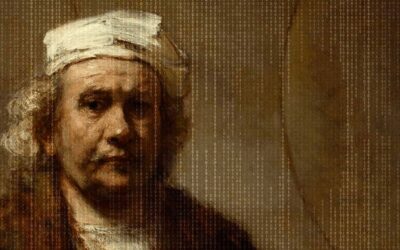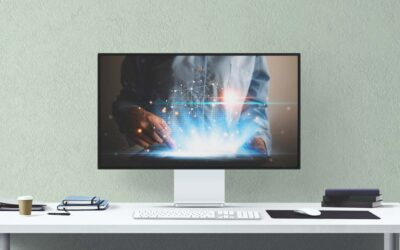A Multimedia Museum CMS Supports User Experience Best Practices

Rachael Cristine Woody
This is the third and final installment in our multimedia museum Collections Management System (CMS) miniseries. This week we’ll dive deeper into the digital user experience by reviewing three best practices and how the multimedia museum CMS helps us follow these best practices.
(Last week we reviewed how a multimedia museum CMS helps us meet baseline user expectations. You can read the first post A Bigger Picture is Possible with a Multimedia Museum CMS here).
Don’t Send Users Away
The ability to upload, publish, and engage with multimedia files within the museum CMS is critical to meeting user experience best practices. You never want to send your visitors away to another site, outside your museum CMS, simply so they can engage with one multimedia file your current CMS doesn’t support. Additionally, these sites (ex: YouTube) are optimized to suck users in and keep them there. If you’re sending your visitors to another site, don’t expect them to come back.
Sensory Preferences and Requirements
Humans come with all types of sensory preferences and requirements. Additionally, our abilities and learning style dictate what types of content may work best for us. By offering multimedia content via the museum CMS, we can better meet digital visitors where they are and offer them content that best suits their sensory preference and ability. Meeting users where they are is a pillar of user best practices—and the multimedia CMS offers a great avenue to address this need.
Exploration and Points of Engagement
A multimedia museum CMS offers a more dynamic user experience because of the different file outputs and how we can engage with them. By offering different but related content, we’re encouraging digital visitors to explore our content further and there are multiple opportunities to provide points of engagement—such as digitally staging a Cultural Heritage Experience (CHE). (Please see the first post in this series for more information on CHEs). Encouraging exploration of content and delivering points of engagement each provide a more enriching visitor experience.
Benefits You Can Leverage
This miniseries covered how a multimedia CMS can benefit our digital visitors in multiple ways. If your museum CMS doesn’t support the upload and delivery of multimedia files, it’s time to make a change. In case you need to make a case to your boss, I’ve compiled a list of the best talking points to raise when making the case for a multimedia-supporting museum CMS.
A multimedia CMS…
- Saves staff time and money because there’s no need to set up duplicate records (each for a file type) or interlink to related multimedia files.
- Eliminates “lost in translation” issues from the physical exhibit to the digital exhibit.
- Provides digital visitors with more information based on the relationships presented in the object grouping.
- Offers a more authentic cultural heritage experience.
- Meets baseline visitor expectations of everything being online, in one spot, and with related material.
- Keeps digital visitors in your CMS, encourages exploration of collection content, and provides points of engagement for a more enriching experience.
- Addresses multiple different user type needs and preferences by offering different digital file types at visitors’ finger tips.
Additional Reading via Lucidea’s Think Clearly Blog

Rachael Cristine Woody
Expert Rachael Cristine Woody advises on museum strategies, collections management, and grant writing for a wide variety of clients. Register here for the next webinar in Rachael’s series on Collections Management System Essentials for Impact on 12/15, where she’ll expand on why the multimedia CMS is the new CMS standard. Learn about Lucidea’s Argus solution for multimedia museum collections management.
Similar Posts
No-Code Digital Storytelling Example: Rembrandt’s Self-Portrait at Kenwood House
Explore how English Heritage’s Kenwood House uses the no-code platform Shorthand to bring Rembrandt’s Self-Portrait with Two Circles to life through visual storytelling and interactive design.
Exploring No-Code Digital Storytelling: Hoover’s “Fanning the Flames” Exhibit
Explore no-code digital storytelling with Hoover’s ‘Fanning the Flames’ exhibit. See how interactive tools (Deep Zoom Color Compare & Hot Spot) enhance user engagement and the visual experience.
An Introduction to Scrollytelling for Museums
Discover how museums use scrollytelling and digital storytelling platforms to create immersive narratives. This introduction explores key concepts and approaches to interactive storytelling.
Exploring Self-Determinate Multiple Pathways: An Example of Digital Storytelling
Discover how self-determinate multiple pathways offer flexible interactive storytelling in museum exhibits. Learn from the Tenement Museum’s ‘Your Story Our Story.’






Leave a Comment
Comments are reviewed and must adhere to our comments policy.
0 Comments